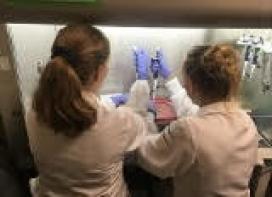Supercooling Technique Developed by ERC Advances the Preservation of Engineered Human Cardiac Tissue
The team at the NSF-funded Engineering Research Center (ERC) for Advanced Technologies for the Preservation of Biological Systems (ATP-Bio), co-led by the University of Minnesota and Massachusetts General Hospital, developed a method for supercooling and reviving engineered human cardiac tissue. The technique shows promise for preserving donor tissue and organs.
Through a technique known as isochoric supercooling, the Center demonstrated that lab-engineered tissues could be preserved and transported in a way that enables their rapid use outside of the lab. The method could also help preserve donor tissue and organs long enough to reach patients in need of lifesaving transplants.
In collaboration with the University of California, Berkeley’s Rubinsky Lab (mechanical engineering) and Healy Lab (bioengineering), the NSF-funded team developed a method to supercool and preserve cardiac tissue grown from adult stem cells. The autonomously beating engineered tissue was preserved at -3°C for up to three days using isochoric supercooling, designed to hold sensitive biologics at low temperatures without freezing and without the use of cryoprotectant chemicals. The researchers then examined the structural integrity of the heart cells and tested whether the tissue retained normal functions.
The approach demonstrates the efficacy of isochoric supercooling as a stable, low-temperature biopreservation method that may be viable for preserving lifesaving donor tissue and organs in the future.



